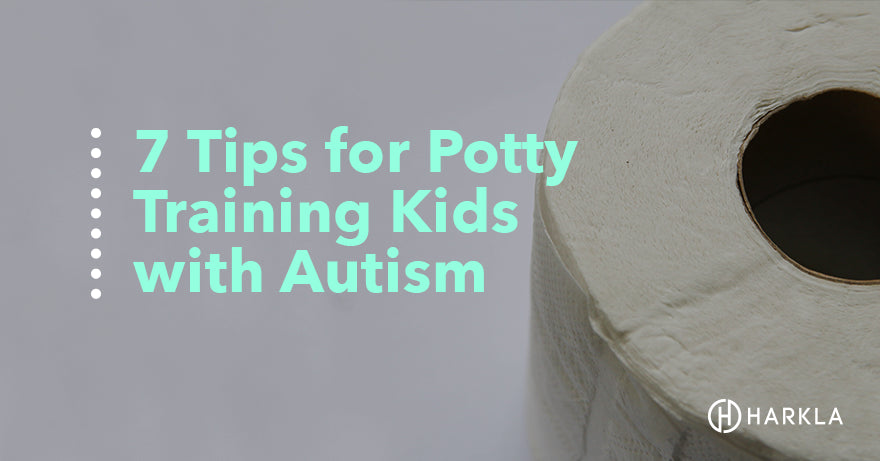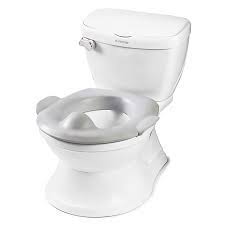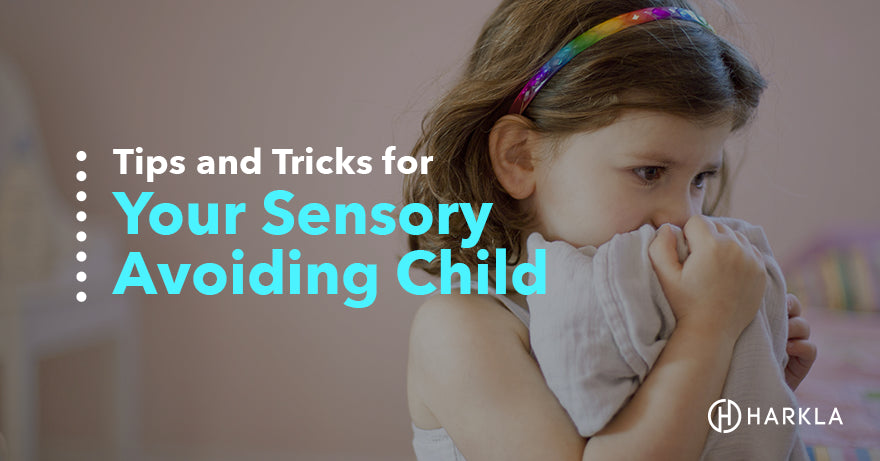Your Cart is Empty

Potty training is an activity of daily living, a developmental milestone, and a rite of passage. It often signifies the transition from being a toddler to becoming a preschooler. It is a real measure of independence.
Being toilet trained is often a requirement for school, summer camp and any child-centered drop-off program. Some children begin to show signs of being ready to toilet train between 18 and 24 months, but many children aren’t developmentally ready until the age of 3.
Parents and caregivers typically know that a child is showing some readiness when they have the physical skills to dress/undress and climb up to sit on a toilet, when they can stay dry for a few hours, or are interested in the potty or in peers that are toilet trained. For some neurotypical children, potty training can be a challenge, but it can be especially difficult for children with autism. Learning how to potty train an autistic child requires special considerations and strategies.
At the toddler and early preschool age, some children on the spectrum may not yet have a diagnosis of autism. They may be receiving Birth To Three or Early Intervention services for language delays or behavioral difficulties, but may not have been identified as a child with ASD, Autism Spectrum Disorder.
Whether you're working on potty training an autistic child age 2 or potty training an autistic child age 3, the following tips and tricks in this article can benefit any family with a child struggling with potty training, not just those with autism diagnoses.
According to numbers published by the Center for Disease Control (CDC) in 2018, approximately 1 in 54 children are diagnosed with autism. This statistic represents a 15% increase in autism prevalence as compared to numbers from 2016. While boys are 4 times more likely to be diagnosed as compared to girls, there is progress in identifying the condition in females, who do not always fit the stereotypical picture of autism that boys may.
Autism is identified by three key components of behavior:
When you think about the requirements for potty training and the inherent deficits present in the typical symptomology of autism, the conflicts can be obvious.
Children with autism may struggle with the social skills to get an adult’s attention to let them know that they need to toilet. They often have limitations around language to communicate such needs, as well as the receptive skills to understand and follow directives when an adult is trying to help.
We know that individuals with autism thrive on routine, and have an intense need for sameness – so the shift from wearing diapers to underwear, and using the bathroom can be huge.

Teaching any new routine is a task that requires a multi-sensory, well-planned, team-based approach. Toileting training may not happen overnight, for children with autism, it can be a lengthy process. The consistency amongst environments will be important too – toileting needs happen everywhere, so flexibility around what toilet you use and where that toilet is located is crucial.
Children with autism often have fine and gross motor challenges – so the physical skills to dress and undress, and to climb up and balance on a toilet seat, must be considered. The dexterity to manipulate fasteners like buttons, zippers, and snaps can be difficult. The body awareness and upper extremity control to manage pants around the hips can be tricky as well.
Individuals with autism typically have sensory needs – they may be unable to recognize the urge to go, determine the sensation of being wet or dry or soiled; and difficulty tolerating the sights, smells and sounds of a bathroom (especially a public one).
When a parent or caregiver is ready to begin the process of toilet training, it's important to agree on some basic facets and make a plan. These strategies work for high functioning autism and potty training as well as children with more support needs.
1. “Sit for Six”
Make it a point to spend time sitting on the toilet or on a child-sized floor potty six times per day. It may start for only a few seconds, but increase time as you go– use timers, distractions, rewards, etc. It may be short to start, but that’s ok. Expect one longer sit when they would typically have a BM. If your child is successful using the toilet during that sit time – reward the behavior and end that “sit” session and move on (don’t sit for the entire scheduled duration). All children should begin sitting – both boys and girls. Boys can stand after they are successful with training for bowel movements.
2. “Ask Don’t Tell”
Tell your child that it is time to try and sit on the toilet, do not ask if they have to go to the bathroom. Establishing a routine and setting the expectations will be important here, a child with autism will struggle with the sensory and communication skills to accurately report whether or not they need to use the toilet.
3. Make a Schedule
Make sure that you’re attempting to use the toilet consistently around the same times per day. It could be around a clock hour, or integrated into a schedule – such as upon awakening, before leaving for school, after recess, etc.
4. Communication
Aim for consistency in your verbal and visual language as much as possible. You could teach the American Sign Language word for toilet in children regardless of their verbal abilities. Supplement with pictures when appropriate, so they become familiar with the language and the steps to toileting.
5. Keep Trying
It takes 3 weeks for a routine to be established. Set new goals every 3 weeks – it could be just tolerating sitting for a few seconds to start, or moving towards having once successful “sit”, and eventually managing their clothing, or staying dry. Be patient with yourself as parents and caregivers, as well as with your child. This could be a lengthy process and requires a lot of hard work and dedication, but it’s an important milestone.
6. Use Visual Supports
Be prepared by taking photos of your bathroom at home, including the toilet paper and sink. Sequence the steps and review them with your child on/off the toilet. Explore social stories and apps that have visuals to teach toilet training. It may be helpful to have a paper copy printed out for your child to refer to on their own, and posted in the bathroom where they can see it.
7. Rewards
Remember to praise every effort no matter how successful. Tolerating a “sit” until the timer goes off may be the first step. Consider a small food reward for every time they “go” in the potty. It can be helpful to schedule a rewarding activity after a trip to the bathroom, such as a favorite show or video to reward the effort.
Knowing when to begin potty training is one of the most common questions parents ask. While typical children may show readiness between 18-24 months, children with autism often need more time to develop the necessary skills.
Look for these readiness indicators before starting:
Most children with autism are ready to begin potty training between ages 3-4, though some may be ready earlier or later. Potty training an autistic child age 2 is possible if they show clear readiness signs, but don't rush the process. Potty training an autistic child age 3 is more common and often more successful because of increased developmental readiness.
For children with high functioning autism and potty training, the timeline may be similar to neurotypical peers, but they may still need extra support with sensory issues or routine changes.
If your child doesn't show these signs, wait a few months and reassess. Starting too early can lead to frustration for both parent and child, and may actually delay success. Focus first on building prerequisite skills like sitting still for short periods, following simple directions, and improving communication.
Before you start implementing the training plan with your child, track their eating and elimination habits, so that you can build a successful schedule around that.
Some other things to think about:
Increase fluids and fiber – when you are both home for a stretch (or a day) together and can be reliable with potty practice, encourage plenty of water and snacks that will lend themselves to increase toileting
Clothing– pants should be easy to remove. Think elastic waist band, soft and easy. Engage your child in pulling pants down (and off, to start) and dressing themselves afterwards.
Wear underwear – It is important for the child to associate wearing underwear with toilet training during the day. You may put a diaper or rubber pants over the underwear to minimize a mess, but the child needs to learn the sensation of wet/dry and when they need a change. Traditional disposable diapers draw the wetness away from the skin, so often children aren’t aware that they are wet. Diapers and pullups are appropriate for nap and nighttime.
Look for clues – many children show physical or behavioral signs when they need to use the toilet. They may hold themselves, wiggle/fidget, demonstrate rocking behavior or vocalizing more than usual, try to hide behind furniture, etc. Intercept when you observe this, using consistent language such as “Time to use the potty”
Consider the setup – make sure that you child is comfortably seated on the toilet with an added seat or on a floor potty, with feet supported by a stable surface. There are plenty of potty chairs that sit on the floor in a variety of colors and characters, with handles and a splash guard.

The Summer Infant brand makes a real look-alike toilet (with a tank on the back) that is child sized.
If you go the route of putting the seat on top of the actual toilet, consider one with an attached step-stool for ease in climbing up and having a place to rest the feet.
Whatever you choose, make sure that there is also a slip-resistant step stool to help with hand-washing. Most children enjoy the calming sensation of water and making bubbles with soap, so work this into your routine as well.
Be sensitive to their sensory needs. Bathrooms are often cold and sometimes acoustically difficult. Public bathrooms typically come with unexpected loud noises – the automatic flushing and the electric hand dryer.
At home, consider the lighting and any smells. Sensitive children may be bothered by intense fluorescent light or the scent of particular cleaning or bath products. Consider playing soothing music or changing the environment when possible to accommodate sensory needs.
Review their schedule and use visual supports to walk through each step of toileting, and review them while you wait. Keep a paper copy posted at home, and consider an electronic or portable version for when you’re on the go.
Stay neutral – Accidents will happen with all children. Those with autism struggle with the social and emotional intricacies of the situation, and an upset parent or caregiver won’t help. Take a deep breath and stay neutral – use consistent, neutral language like: “Pee goes in the potty”. Involve them in changing into dry clothes after an accident, and helping to clean anything that ends up on the floor. If they wet/soil a diaper/pants, change it in the bathroom so that they begin to associate the action and the environment. Empty solid waste into the toilet and have the child flush, and wash hands afterwards. It can be difficult for adults not to show their emotion (disappointment, disgust, frustration, etc.) but it is incredibly important to stay calm.
Give rewards – Potty training is an important process and reinforcement will be key. Verbal praise, any sticker or stamp, a food reward or reinforcing activity. It may help to have a small food reward for immediate use when the child is successful on the toilet. Reward the attempt as part of the routine, but something extra special may be helpful when waste goes into the toilet. Set them up for success when they are learning a new (and developmentally difficult) skill.
Potty training is an incredibly important milestone in childhood. Remember that becoming toilet trained during the day and waking hours happens well before night-time training occurs.
It’s typical for most children to become bladder trained before bowel trained. Make a plan and involve everyone on your child’s team – teachers and therapists, babysitters and caregivers.
Its best to begin to review the plan with your child and teach them the steps well before you start in the bathroom, and be prepared with visual timers, rewards, schedules and social stories. Be kind to yourself, remain neutral and calm, and show patience when accidents happen.
Potty training a child with autism typically takes 3-6 months for daytime training, though some children may take up to a year or longer. The timeline varies greatly depending on the child's developmental level, sensory needs, and communication skills. Remember that the 3-week rule applies to establishing each new routine—give yourself and your child at least 3 weeks of consistent practice before expecting major progress.
Most children with autism are ready to begin potty training between ages 3-4. However, some may show readiness as early as age 2, while others may not be ready until age 4-5 or later. Focus on readiness signs rather than age. Look for physical ability to stay dry for 2+ hours, some form of communication, ability to follow simple directions, and interest in the bathroom.
Use underwear during the day when actively potty training. You can place a diaper or rubber pants over the underwear to contain accidents, but the child needs to feel the wetness to learn the difference between wet and dry. Pull-ups and diapers wick moisture away from the skin, which prevents learning. Save pull-ups for naptime, nighttime, and outings until your child is more consistently successful.
Fear of the toilet is common in children with autism due to sensory sensitivities. Start by desensitizing your child gradually. Let them spend time in the bathroom without pressure, explore the toilet when it's not flushing, and use a smaller potty chair instead of the big toilet. Address sensory issues like loud flushing sounds (flush after they leave, or use a visual warning), cold seats (use padded seats), and the fear of falling (use seats with handles and proper foot support).
Yes, you can successfully potty train a nonverbal autistic child. Communication is key, but it doesn't have to be verbal. Teach sign language for "toilet" or "potty," use picture cards or communication devices, and watch for physical cues that indicate they need to go. Visual schedules and social stories are especially helpful for nonverbal children. Consistency and routine matter more than verbal communication.
Regression is common in children with autism and can happen due to stress, changes in routine, illness, new siblings, moving homes, or starting school. When accidents increase, stay calm and neutral. Return to a more frequent bathroom schedule, increase rewards and praise, and review visual supports. If regression lasts more than a few weeks or you can't identify a cause, consult with your child's pediatrician or therapist.
Consider seeking help from an occupational therapist or behavioral therapist if your child is over age 4-5 and shows no progress after 6 months of consistent training, has severe sensory issues that prevent sitting on the toilet, shows extreme anxiety or fear around bathrooms, or has physical difficulties with bowel or bladder control. Your child's therapy team can create an individualized plan and address underlying issues.
https://tats.ucf.edu/wp-content/uploads/sites/9/2020/01/adaptive-toilet.pdf
https://www.autismspeaks.org/expert-opinion/seven-toilet-training-tips-help-nonverbal-kids-autism
https://www.autismspeaks.org/sites/default/files/2018-08/Toilet%20Training%20Guide.pdf
Comments will be approved before showing up.


Sharon Lucas
December 05, 2023
How to potty train a 9 year old with autism. She is stubborn and I have been unable to get it done. Mom and dad are divorced and he gets visitation two times a month and I am do not get help when I try to potty train her. Please give me some advice on what to do